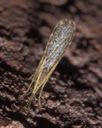Limoniid Crane Flies
Limoniidae
Classification
- Phylum: Arthropoda
- Subphylum: Hexapoda
- Class: Insecta
- Order: Diptera
- Infraorder: Tipulomorpha
- Family: Limoniidae
Pronunciation
How to pronounce Limoniidae: /lɪˈmoʊni.aɪdiˌiː/
These audio files are automatically generated. While they are not always 100% accurate, they are a good starting point.
Images






Summary
The family Limoniidae, known as Limoniid Crane Flies, is the largest family of tipulomorph flies with over 10,700 species reported. The family has historically been treated variably, and current classifications suggest a paraphyletic grouping. They are adapted to various moist habitats and possess distinct physical characteristics helpful in identification.
Physical Characteristics
Limoniids are medium or small-sized, with the proboscis lacking a beak. The apical segment of the maxillary palpi is short and never longer than the subapical one. Most species have 14- or 16-segmented antennae, usually verticillate. The wings are monochromatic or punctate and can be shortened or reduced in some instances. Males have large separated gonocoxis and one or two pairs of appendages, while females have a sclerotized ovipositor.
Identification Tips
Distinguished by the way wings are held at rest—limoniids fold their wings along the back of the body, unlike other crane flies which hold them at right angles. Size tends to be smaller than other crane flies, except for some species.
Habitat
Found in damp places such as swamps, marshes, leaf litter, wet spots in woods, and aquatic environments (both stagnant and fast-flowing streams). They occupy a range of microhabitats, including decaying wood and moss cushions.
Distribution
Worldwide, with a significant number of species in the West Palaearctic, Nearctic, and Australasian/Oceanian regions.
Diet
Larvae are mostly aquatic or semi-aquatic and can be herbivorous, saprophagous, mycetophagous, or predatory, feeding on various organic materials including fungal mycelia and decaying plant matters.
Evolution
Limoniids are not particularly common in amber deposits, but fossil records suggest they have been around since at least the Upper Jurassic to Upper Cretaceous periods, indicating a long evolutionary history.
Similar Taxa
Tags
- Limoniidae
- Limoniid Crane Flies
- Insecta
- Diptera